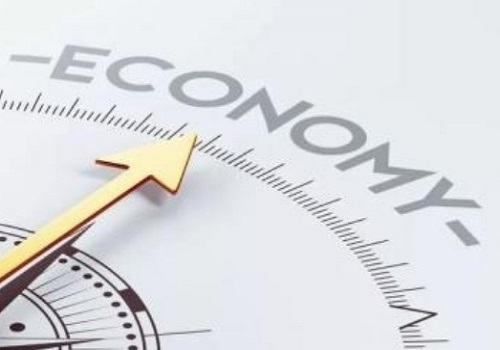Covid II Policy Measures By Emkay Global

Follow us Now on Telegram ! Get daily 10 - 12 important updates on Business, Finance and Investment. Join our Telegram Channel
No new fiscal surprises
* The additional measures announced by the FM largely build on the previous packages focused on credit support to small/MSME segments, and small loans and specific support for the tourism sector. There were mild tweaks in regulatory and technical aspects, including changing the MSME classification strategy, incentivizing firms to grow further through a combination of credit guarantees, insurance, etc. There was also a reiteration of the extension of food and fertilizer subsidy support to the tune of around 0.46% of GDP.
* However, most of the fiscal support is still below the line - in the form of loan guarantees, and not direct stimulus. While the policy focus remains on small and vulnerable segments, it needs to be seen if this helps boost credit offtake amid persistent concerns around asset quality, sub-par collection efficiencies and still-uncertain economic upturn.
* We estimate that Centre’s FY22 fiscal math is likely to get disturbed by ~0.5% to 7.3% of GDP. The fiscal hit in the form of lower divestment, higher doles on food/fertilizer subsidy, and higher health and NREGA spending may outstrip buffers such as bumper RBI surplus and wholesale inflation-led higher nominal GDP. Capex adjustment (cuts) and revex rejigs could turn out to be the balancing/offsetting factor.
New fiscal measures focused on credit incentives for MSME and Covid-sensitive segments
The FM announced additional measures today to provide better financial support to sectors impacted by the second wave of Covid, which largely build on the previous packages focused on small/MSME segments, and small loans and specific support for the tourism sector. The Emergency Credit Line Guarantee Scheme (ECGLS) has been extended by Rs1.5tn to Rs4.5tn, with the deadline for disbursal extended to December 31, 2021. We note that the last three tranches of ECLGS have not seen full optimization albeit still-decently received with Rs2.69tn being disbursed vs. Rs3tn allotted.
The new ECLGS’s ambit has been widened to include the healthcare and hospitality sectors. Among other things, some regulatory and technical aspects include changing of the MSME classification strategy, incentivizing firms to grow further through combination of credit guarantees, insurance, etc. A temporary free touristvisa scheme has also been outlined. The government also reiterated previously announced measures like additional fertilizer subsidy and extension of free food grains under PMGKAY till Nov’21 (see Exhibit 1,4).
New fiscal moves to have direct fiscal bearing of around 0.5%+ of GDP in FY22
The new Covid relief measures are a welcome step; however, most of the fiscal support is still below the line - in the form of loan guarantees, and not direct stimulus. While the policy focus remains on small and vulnerable segments, it needs to be seen if this helps boost credit offtake.
The lenders still seem concerned on asset quality, sub-par collection efficiencies and still-uncertain economic upturn. Nonetheless, including the 1) additional food subsidies and higher fertilizer subsidies which were already announced and reiterated today (0.48% of GDP), and 2) already budgeted medium-term reforms for power distribution (0.06% of GDP in FY22), the effective spending is unlikely to be above 0.5% of GDP.
Centre’s fiscal deficit/GDP may slip ~0.5% from the budgeted 6.8% in FY22
Amid various push and pull, there is a likelihood of fiscal slippage to the tune of around 0.5% from the initially budgeted 6.8% (see Exhibit 2,3). Even accounting for positive budget buffers such as bumper RBI surplus and higher nominal GDP on higher wholesale inflation, factors like 1) higher payouts than budgeted on food, fertilizer subsidy, health (vaccination and health infra cost) and NREGA, 2) possible miss on ambitious divestment targets, and 3) possible fading of the positive upside surprises on conservatively budgeted tax estimates will outweigh on the fiscal math. As of now, we are not taking major cuts in Centre’s budgeted capex. The government narrative is still capex-driven, pushing both CPSE and its own machinery for capex frontload. But we reckon that some capex cuts/revex rejig could be an offsetting factor. We understand the general government is running cash balances above Rs4tn, depicting caution on the spending front.
Despite the slippage, the effective fiscal impulse will still be negative in FY22.
Given the limited efficacy of monetary easing currently, continued countercyclical fiscal policy support - and avoiding a premature consolidation - remain crucial. (See “Fiscal Account: Bracing for slippages and changing rates market dynamics”, June 9,2021)
To Read Complete Report & Disclaimer Click Here
For More Emkay Global Financial Services Ltd Disclaimer http://www.emkayglobal.com/Uploads/disclaimer.pdf & SEBI Registration number is INH000000354
Above views are of the author and not of the website kindly read disclaimer










Top News

Reliance accelerates progress on its Net Zero journey; achieves net reduction in air emissio...
Tag News

Monthly Debt Market Update, September 2023: CareEdge Ratings





 320-x-100_uti_gold.jpg" alt="Advertisement">
320-x-100_uti_gold.jpg" alt="Advertisement">







